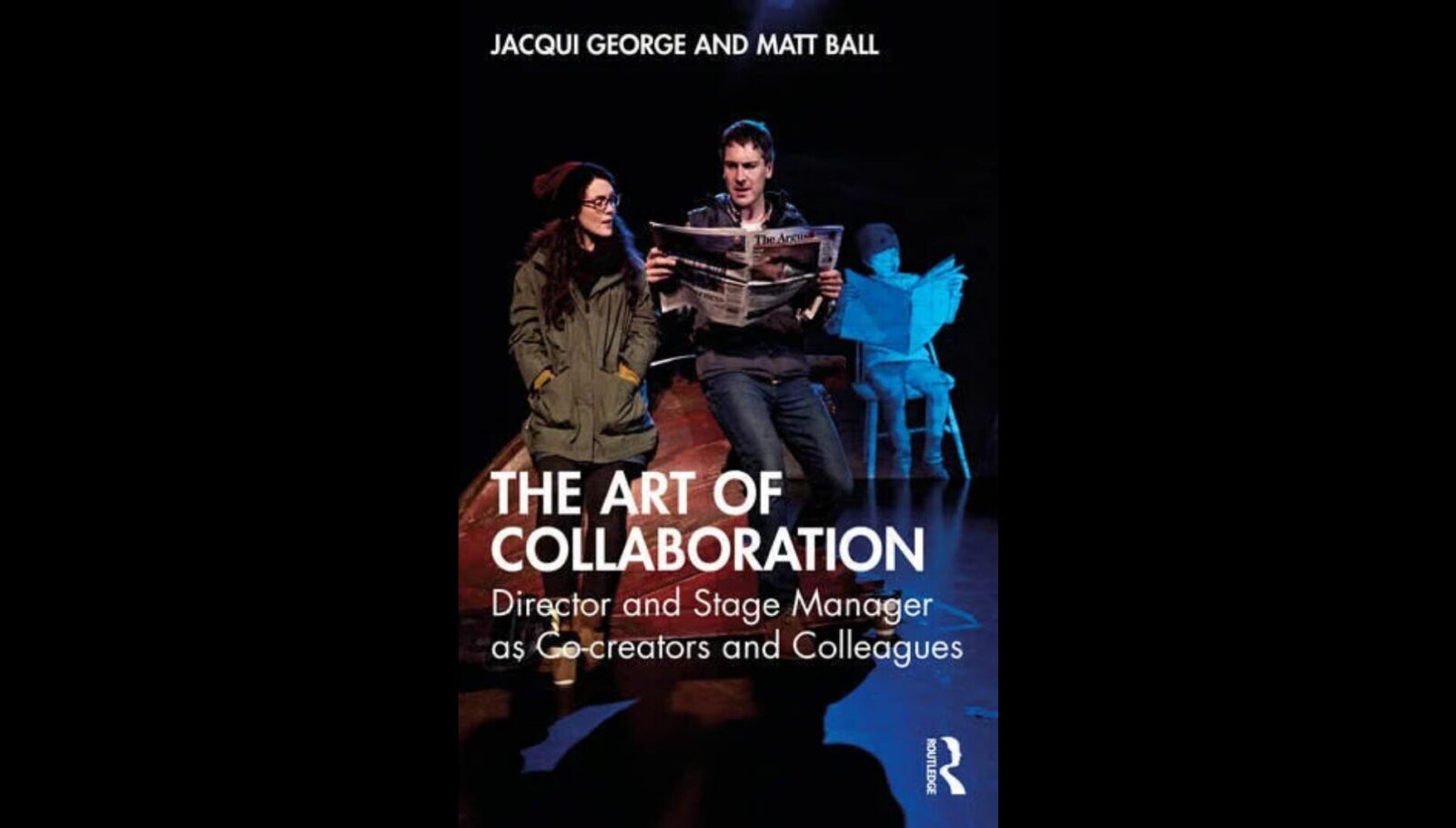The Art of Collaboration: Rethinking How Directors and Stage Managers Work Together

Some partnerships shape entire productions—but few are as vital, or as misunderstood, as the one between the director and the stage manager.
In their new book The Art of Collaboration: Director and Stage Manager as Co-creators and Colleagues, long-time colleagues and educators Matt Ball and Jacqui George turn the spotlight onto this creative relationship. Drawing from over 25 years of shared professional practice, interviews with directors and stage managers around the world, and countless hours in rehearsal rooms, the pair explore what makes collaboration work—and what quietly breaks it.
From miscommunication and hierarchy to reflection and trust, they examine how habits, training, and culture influence the creative process. Our conversation touched on everything from costly mistakes to the small, human moments that define how productions are built.
Anna Robb: What inspired you to write The Art of Collaboration?
MB: Jacqui and I have worked together for about 25 years, across everything from university training programs to professional productions. Over time, we realized that directors and stage managers rarely get to understand each other’s work unless they happen to collaborate. You only ever see the relationship you’re in.
We wanted to create something that helped demystify that partnership—something that could enhance training and give people language to talk about how these roles connect. Surprisingly, there weren’t any books out there that specifically explored this relationship, even though it’s central to how every production functions.
JG: Yes, and if you look at how stage managers are trained internationally, it’s almost always in isolation. Stage managers are taught by other stage managers. Occasionally a producer or lighting designer might pop in to give a guest lecture, but the focus tends to be on “what a stage manager does” rather than “how a stage manager collaborates.”
So we wanted to step back and ask—what does it mean to build that relationship? How do directors and stage managers actually learn to communicate, and why are we not teaching that part?
AR: Can you share a moment when miscommunication shaped how you work?
JG: Oh, there are so many. One that really stands out was a production with a big stage management team—five of us in total. We had this major practical effect: a blood pit. The team had dug it, lined it, filled it, and tested it. Then the director walked by and said, “Oh no, that’s not what I meant at all.”
It was one of those moments that makes your stomach drop. Not because anyone did anything wrong, but because the communication had drifted. We hadn’t checked in at all the right moments. That experience taught me to maximize every opportunity for communication—tea breaks, hallway chats, post-rehearsal calls—because crucial information doesn’t always come through formal channels. Sometimes it’s shared over coffee.
MB: That example really captures what we talk about in the book—how information travels in so many informal ways, and how part of the stage manager’s job is to recognize where it’s coming from.
We also noticed in our interviews that directors and stage managers see mistakes very differently. Directors often call their mistakes “creative pivots,” while stage managers label theirs as “errors.” Directors can reframe and move on; stage managers are expected to take accountability. That imbalance means one role gets to experiment freely while the other has to constantly manage precision. We wanted to bring that into the open.
AR:That’s so true—I’ve seen huge creative and technical miscommunications that cost thousands because no one stopped to double-check what “let’s try this” actually meant.
MB: Exactly! There’s a great story in the book from Matthew Dunster about a scenic element at Shakespeare’s Globe that was built and installed—only for him to realize it didn’t work. The production team then relocated it to the stage-door corridor so every day he had to walk past his “creative pivot.” It’s a perfect illustration of how everyone learns through mistakes—if you’re willing to own them.
AR: What assumptions or habits get in the way of strong collaboration?
MB: Directors often walk into a rehearsal room and assume everyone works like they do. They set the tone and schedule according to their personal style—sometimes without realizing how that impacts everyone else. A big part of collaboration is awareness: recognizing how your habits affect others and creating a space where everyone’s ways of working can coexist.
JG: And then there’s hierarchy. Theatre has inherited a very traditional hierarchy that puts directors on a pedestal and positions everyone else as “support.” That’s something we navigate every day.
It’s not about dismantling authority or ignoring vision—it’s about balance. The stage manager needs to have space to ask why something is being done, to offer perspective, and to be part of the creative reasoning. Collaboration isn’t obedience; it’s dialogue.
The director doesn’t have to take every suggestion, but just listening opens up new creative possibilities. We talk about moving away from that old model of command-and-control toward something more conversational, where everyone contributes to making the work better.
AR: You both talk about reflection as a missing skill in production culture. What does that look like?
JG: Reflection is something we rarely make time for. We finish tech, open the show, and immediately move on to the next project. There’s no structured moment to sit down and ask, “What did we learn?” or “How did this process work for us?”
In the book we suggest that reflection needs to be part of the process, not an afterthought. If the director and stage manager can debrief honestly—without judgment or hierarchy—they both grow. Without that, we end up repeating the same patterns and frustrations because we never pause to notice them.
MB: And that honesty can be tricky because of how our industry is structured. Often, the person you’d reflect with might also be your next employer. That makes people hold back.
But when collaboration is genuine—when it’s built on trust and equality—you don’t have to worry about blame. The conversation becomes “what did we learn?” rather than “who got it wrong?” Reflection stops being a post-mortem and starts being part of the creative process.
AR: What do you hope readers take away from The Art of Collaboration?
JG: It’s not a rulebook—it’s a collection of tools and stories. You don’t have to use everything, but hopefully, it gives people starting points for thinking differently about how they work together. It’s about understanding that collaboration isn’t a personality trait; it’s a practice.
MB: Exactly. We wanted it to feel conversational—like you’re sitting in the pub after tech talking about what worked and what didn’t. We also hope it sparks further exploration. There’s so little written about how these creative relationships function in practice, not just between directors and stage managers, but across departments. We’d love to see more writing and research on those connections
The Art of Collaboration is both timely and timeless. It captures what happens when two roles—often defined by hierarchy—decide to meet as equals. Through practical examples, candid stories, and a tone that feels more like mentorship than instruction, the book invites readers to rethink what working together really means.
As Matt Ball puts it, “Collaboration isn’t about getting it right every time. It’s about staying in the conversation.”
The Art of Collaboration
Published by Routledge, 2025
Available now in print and digital formats
Editor's Note: At StageLync, an international platform for the performing arts, we celebrate the diversity of our writers' backgrounds. We recognize and support their choice to use either American or British English in their articles, respecting their individual preferences and origins. This policy allows us to embrace a wide range of linguistic expressions, enriching our content and reflecting the global nature of our community.
🎧 Join us on the StageLync Podcast for inspiring stories from the world of performing arts! Tune in to hear from the creative minds who bring magic to life, both onstage and behind the scenes. 🎙️ 👉 Listen now!
